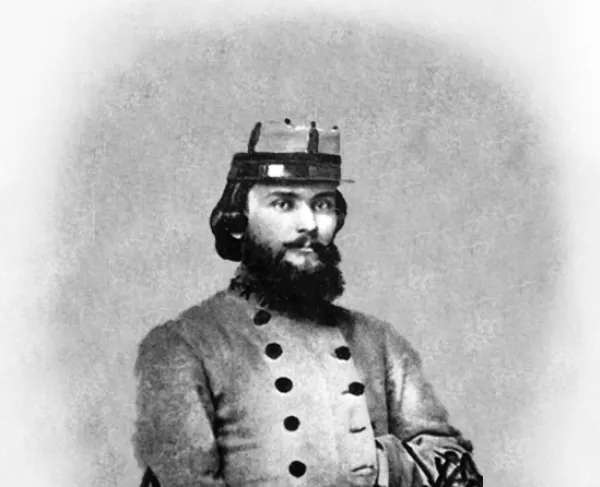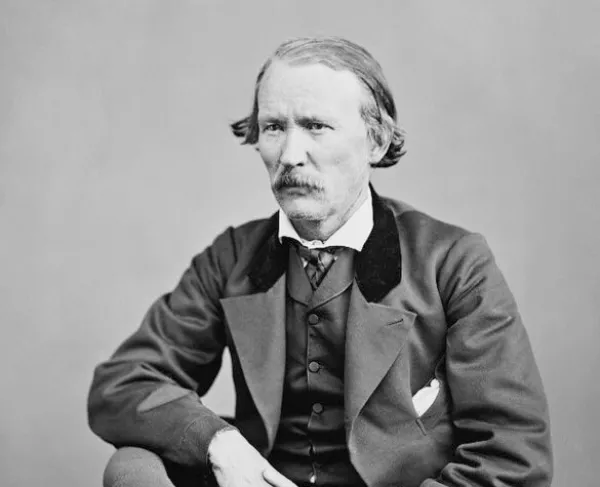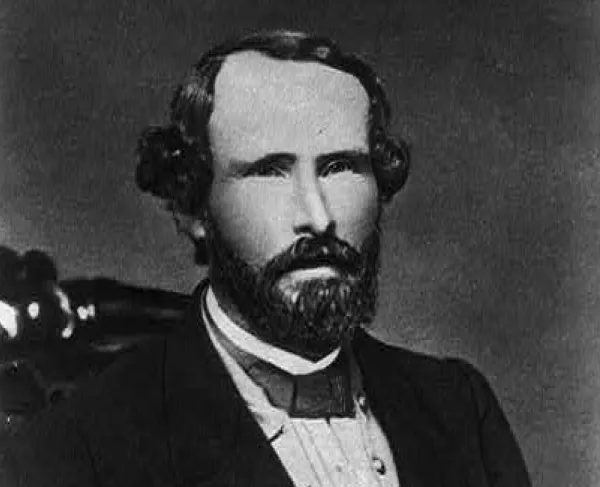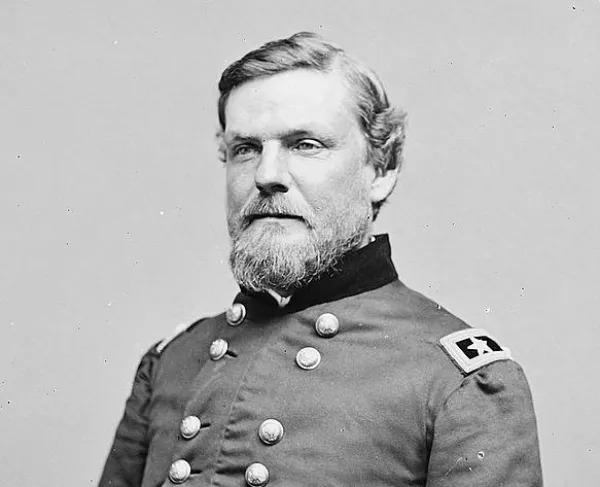William C. Oates

William Calvin Oates commanded the 15th Alabama Regiment that gained notoriety during battle of Gettysburg ». He was also a veteran of dozens of other major conflicts throughout the Civil War serving with distinction until the conclusion. In the late nineteenth century he became an important political figure in the state of Alabama assuming governorship in 1894. Oates also pursued an array of occupations both before and after the war including ascending to the rank of General during the Spanish-American War.
Born November 30, 1835 in Pike County in the Black Belt of Alabama, Oates began his professional career before the Civil War as a teacher, painter and carpenter. Known for his aggressive nature Oates fled to Florida after fracturing a man’s skull in a brawl and drifted through Florida, Louisiana and Texas until his return to Alabama prior to the war. In 1858 Oates began practicing law in Abbeville, Alabama eventually establishing his own practice there with his younger brother John Oates.
At the onset of the war Oates joined the ranks of the 15th Alabama Infantry company G as a Captain. Oates and the 15th first saw action during the Valley Campaign under the Confederate General Thomas “Stonewall” Jackson » incurring minimal casualties during their first clash with northern troops at the Battle of Front Royal on May 23, 1862. In the beginning months of 1863 Oates became colonel of the 15th Alabama. The regiment gained notoriety on July 2, 1863, the second day of Gettysburg, by unsuccessfully charging the Union held position of Little Round Top manned by Colonel Joshua Chamberlin » and the 20th Maine. Colonel Oates’ younger brother Lt. John Oates was killed in action during the attack. In the years following the war Colonel Oates publicly held the opinion that had one more Confederate regiment ascended Little Round Top the Confederates would’ve taken the position and turned the tide of Gettysburg. After the defeat of Gettysburg, Oates and the 15th Alabama briefly shipped out to the Western Theater under General James Longstreet » and participated in the battle of Chickamauga ». Oates also commanded the troops that opposed the Union crossing of the Tennessee River at Brown’s Ferry during the siege of Chattanooga » where his unsupported command was forced to withdraw.
After his brief stint in the west Oates returned to Virginia where he again participated in decisive battles countering General Ulysses S. Grant’s » Overland Campaign, fighting at The Wilderness », Spotsylvania Courthouse » and Cold Harbor ». During July of 1864 he was transferred to the 48th Alabama Infantry continuing to hold the rank of Colonel. Oates was severely wounded in his 27th battle on August 16, 1864 at Fussel’s Mill which resulted in the loss of his right arm. Despite suffering his sixth wound of the war, Oates once again returned to the army and remained in command of the 48th Alabama until cessation of hostilities.
After General Robert E. Lee’s » surrender at Appomattox, Oates returned to his home in Abbeville, Alabama where he resumed his legal career and amassed substantial wealth and influence. He later delved into the realm of politics where he found great success by first becoming a delegate in the Democratic National Convention. Oates was elected to the United States House of Representatives in 1880 where he remained until he reached the peak of his political career in 1894 being elected as the 29th governor of Alabama. However, he only held the position for two years until 1896. The height of Oates’ military career commenced itself as President William McKinley appointed Oates to the rank of the Brigadier General in 1898 serving during the Spanish-American War. He lived to see the turn of the century dying on September 9, 1910 at the age of 74, Oates is buried in the Oakwood Cemetery of Montgomery, Alabama ».





